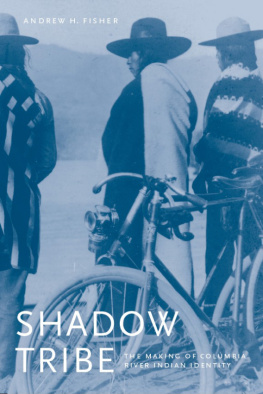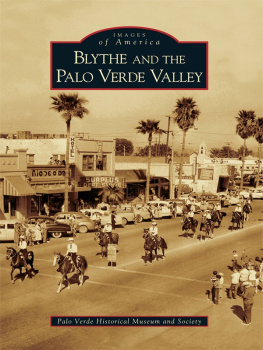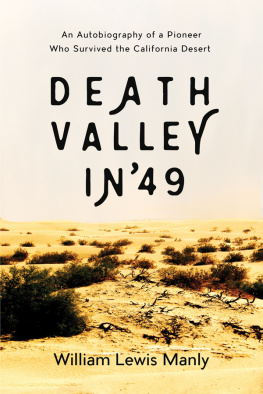we were all like migrant workers here
2009 THE UNIVERSITY OF NORTH CAROLINA PRESS
All rights reserved
Manufactured in the United States of America
Designed by Courtney Leigh Baker
Set in Whitman by Keystone Typesetting, Inc.
The paper in this book meets the guidelines for permanence and durability of the Committee on Production Guidelines for Book Longevity of the Council on Library Resources.
The University of North Carolina Press has been a member of the Green Press Initiative since 2003.
Parts of this book have been reprinted with permission
in revised form from Working for Identity: Race, Ethnicity,
and the Market Economy in Northern California, 18751936,
in Native Pathways: American Indian Culture and Economic
Development, edited by Brian Hosmer and Colleen ONeill
(Niwot: University Press of Colorado, 2004), and We Were
All Migrant Workers Here: Round Valley Indian Labor in
Northern California, 18501929, Western Historical Quarterly
37 (Spring 2006): 4363, Western History Association.
Library of Congress Cataloging-in-Publication Data
Bauer, William J., Jr.
We were all like migrant workers here : work, community, and
memory on Californias Round Valley Reservation, 18501941 /
William J. Bauer, Jr.
p. cm.
Includes bibliographical references and index.
ISBN 978-0-8078-3338-4 (cloth: alk. paper)
1. Indians of North AmericaCaliforniaRound Valley Indian
ReservationSocial conditions. 2. Indians, Treatment of
CaliforniaRound Valley Indian Reservation. 3. Round Valley
Indian Reservation (Calif.)Social conditions. I. Title.
E78. C15B323 2009
979.415dc22 2009024326
13 12 11 10 09 5 4 3 2 1
FOR KENDRA, who deserves more than this book
contents
maps and illustrations
MAPS
Tribal Territories and Location of the Round Valley Reservation
Round Valley Reservation, ca. 1880
ILLUSTRATIONS
Indian workers on the Nome Cult Farm in the 1850s
The last remnants of the wood fence built by Round Valley Indian workers in the mid-nineteenth century
Nomlacki Jim McGetric, who turned to sheepshearing in order to earn cash wages
Pomo woman holds a child in a hop camp near Ukiah
Pomo boy separates hop flowers from stems in a hop field near Ukiah
Round Valley Indian men and their teams working on a ditch and road project in 1907
Yuki Ralph Moore was an active member of Round Valleys labor community
Wailacki June Russ Britton hoeing her garden in the 4-H program established during the Great Depression
Two girls standing in front of Yuki/Wailacki Filmore Duncans house in the 1930s
Indians working on the Nashmead Bridge
preface
The story of Ishi casts a looming shadow over California Indian history. In 1911, Ishi wandered into a slaughterhouse near Oroville, California. He had never had any apparent contact with California settlers. After spending a night in the local jail, Ishi went to San Francisco and spent five years working with the anthropologist Alfred Kroeber. Ishi was the ideal informant for Kroebers salvage anthropology because he had spent his entire life away from the influences of American culture. In 1916, Ishi passed away from tuberculosis. He died the last wild Indian in North America. The story of Ishi portrayed California Indians as imprisoned in the nineteenth century and culturally degraded in the twentieth century. Indeed, Ishis death in the city of San Francisco confirmed that California Indians could not adapt to modern America. However, other narratives of California Indians await investigation. This book is such an effort.
Using a rich body of oral history interviews and archival sources, this book explores the experiences of Indians from northern Californias Round Valley Reservation in Californias agricultural workforce. Rather than being victims of economic change, Round Valley Indians used wage labor to create and maintain a sense of community in the nineteenth and twentieth centuries. In particular, Round Valley Indians used wage labor to ensure family economic survival, forge social connections with other Native people in northern California, and maintain close connections with the land.
Before contact with Euroamericans, California Indians created social bonds in their households and villages by hunting and harvesting food sources. However, the California gold rush disrupted indigenous community and labor relations. Systems of unfree labor, squatter settlement, and removal to the reservation divorced California Indians from their families and the land. Beginning in the 1860s, however, Round Valley Indians rebuilt community on the reservation. By picking hops, shearing sheep, and performing other agricultural jobs, Round Valley Indians carved out their own economic and social space. These efforts continued in the late nineteenth and twentieth centuries. Despite the allotment of the reservation, federal land policies, and the Great Depression, Round Valley Indians innovatively used work and economic change to their advantage in order to survive and persist in the twentieth century.
This book is built upon a large collection of oral interviews. For those interviews that I conducted I use the first name of the person in this book rather than the last name. I do so because of the relationship that the interview created between me and the person I interviewed. Students of oral history agree that the interview process is not a detached research experience, like reading primary documents in archives. Instead, it is a profoundly social experience that creates ties between the interviewer and interviewee. Since I already knew some of the people I interviewed (indeed I am related to some of them) and they all made efforts to make personal connections with me in the interview process (through stories about me or my relatives), I find it appropriate to refer to them in the first person.
I have attempted as faithfully as possible to provide the tribal identities of the Round Valley Indian population. In the case of a bi- or tri-tribal ethnicity, I use a hyphen to combine the tribal heritages of that person. However, it was difficult to always do so. Early twentieth-century censuses from Round Valley lumped together certain tribal groups. For instance, the Pit River and Nomlacki and the Yuki and Wailacki were listed on the same census, making an accurate identification of their ethnicity problematic. Thus, I have designated the uncertain tribal heritage with a slash. Finally, careful readers will note that I use alternative spellings of some tribal names in this book. I use the spellings from the tribal seals of the Round Valley Indian Tribes (for example, Nomlacki rather than Nomlaki, Wailacki rather than Wailaki, and Concow rather than Konkow) in order to produce a book that will be understood by the Round Valley Indian Community.
acknowledgments
As I bring this book to completion, I find that it is true that work does not exist without a strong community. James Bequette, a teacher, friend, and colleague, cultivated my interest in writing. I hope that this finished product reflects his hard work. Nancy Fischer offered me a place to study during frequent trips home. At the University of Notre Dame, Thomas Blantz, Gregory Dowd, and Thomas Pierce sparked my curiosity in history and helped me get into graduate school. At the University of Oklahoma, Robert Griswold, Paul Gilje, R. Warren Metcalf, and Terry Rugeley taught me so much about being a historian and a teacher. I also thank my graduate student colleagues at the University of Oklahoma, especially S. Matthew Despain, Linda English, Brian Frehner, Sarah Janda, and David Loving. Brad Raley was among the first people I met at the University of Oklahoma. I genuinely thank him for his friendship at the university, for the morning coffee, and for his support when I left Oklahoma. I worry about his taste in football teams, and I really did not appreciate his mocking tone when Laramies annual September snowstorm arrived. But he has been a fantastic friend and colleague. At the University of Wyoming, Judith Antell, Adrian Bantjes, Michael Brose, Marianne Kamp, David Messenger, Mark Potter, Philip Roberts, Ronald Schultz, and Kristine Utterback made the History Department and the American Indian studies program hospitable places to work. Thanks also to Leif Cawley, Douglas Johnson, and Becky Riley for managing the History Department. I have also had the opportunity to think about and discuss American Indian history with the following graduate students: Brandi Hilton-Hagemann, Catherine Lucignani, Matthew McIntosh, Karl Snyder, Julie Stidolph, and Skott Vigil. It has been my joy as a teacher to watch my students develop as scholars and friends. I thank Jeff Means for reading this manuscript and offering excellent advice. Peg Garner provided extremely helpful editorial advice and was an enthusiastic audience for the book. Thanks to Edward Janak and Cheryl Wells for making Laramie a livable place and this book a better product.





